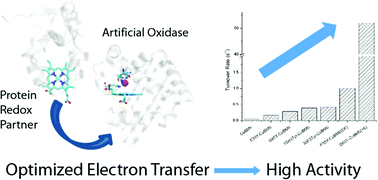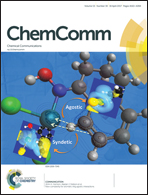Improving artificial metalloenzymes' activity by optimizing electron transfer
Abstract
While many artificial metalloenzymes have been reported, and are proposed to be highly promising for energy, environmental and medical applications, few could match the turnover rate (TOR) and turnover number (TON) of natural enzymes. Since electron transfer is oftentimes the rate-determining step, optimizing the electron transfer efficiency is an effective approach to significantly enhance artificial enzymes' activity. In this article, we review the recent progress in improving artificial metalloenzymes' activity by optimizing electron transfer.



 Please wait while we load your content...
Please wait while we load your content...